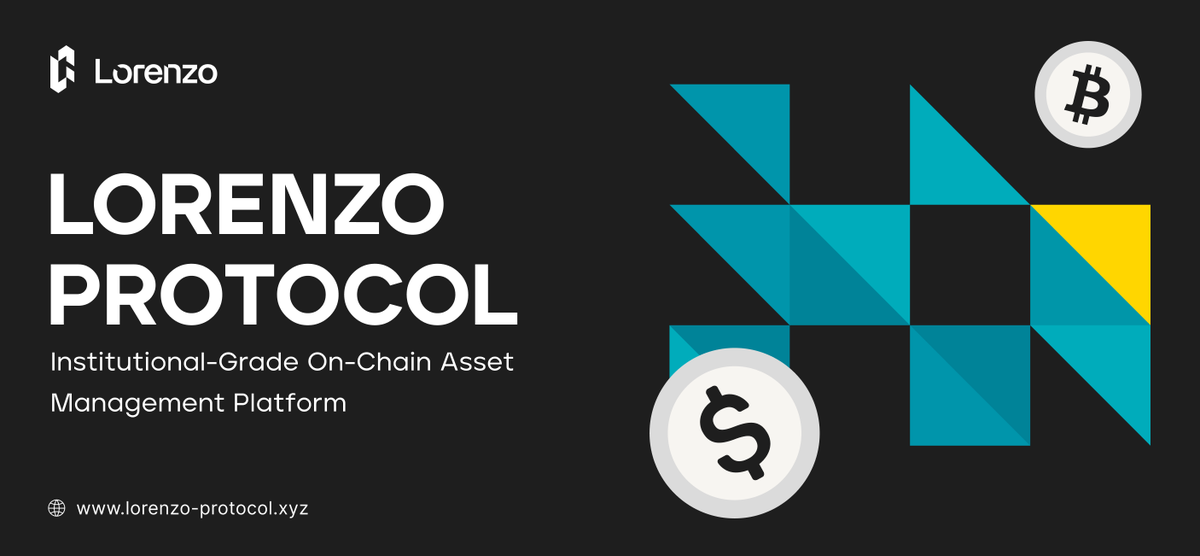Recently, @LorenzoProtocol completed a strategic upgrade, transforming from a simple BTC liquidity re-staking protocol into an institutional-grade on-chain asset management platform. With this strategic adjustment, its ambitions are no longer limited to providing liquidity services for the Babylon ecosystem but are now targeting the massive $1.6 trillion on-chain DeFi market. What's the logic behind this? Let me share my observations:
1) The BTCFi track led by Babylon was once given lofty expectations by the market, and Lorenzo Protocol, as a flagship project of the Babylon ecosystem, successfully completed its TGE (TGE oversubscribed by 183 times, $600 million BTC under management).
Indeed, Lorenzo relies on Babylon Chain's shared security mechanism for its technology, and its stBTC product provides the liquidity needed for the Babylon ecosystem. However, this does not mean Lorenzo is confined to or solely serves the Babylon ecosystem. Therefore, this strategic upgrade is not abrupt but rather demonstrates Lorenzo's intent to use its liquidity solution, stBTC, to capture a broader on-chain application market.
2) How should we understand the overall architecture of Lorenzo's upgraded institutional-grade asset management platform? Simply put: Lorenzo is now the on-chain version of "Goldman Sachs"—connecting funding sources (BTC, stablecoins) on one side and yield strategies (staking, arbitrage, quantitative trading) on the other, packaging them into standardized yield products for integration into other applications.
In essence, its core innovative feature is its new Financial Abstraction Layer, positioned to empower broader application scenarios with institutional-grade fund management capabilities and diverse yield products, rather than being limited to deep vertical exploration within the Bitcoin ecosystem.
3) In its new architecture design, Lorenzo has built a four-layer system: the underlying strategy layer, offering yield strategies with different risk levels; the financial abstraction layer, standardizing strategies; financial product tokenization, encapsulating them into OTFs (On-chain Trading Funds); and the application integration layer, enabling one-click integration with PayFi, wallets, RWA platforms, and other application scenarios.
The most noteworthy aspect is its newly introduced OTF (On-chain Trading Fund) concept—providing tokenized yield strategies (such as fixed income, principal protection, and dynamic leverage) through a unified tradable token for ordinary users, similar to ETFs in traditional finance.
The OTF model achieves a full process of "on-chain fundraising, off-chain execution, on-chain settlement," enabling centralized financial strategies like quantitative funds, credit portfolios, or market-making to be brought on-chain. Each OTF product is tokenized in the underlying system, and purchasing it mints OTF tokens (liquid staking tokens), allowing ordinary users to easily access complex trading strategies, just like buying ETFs.
Compared to Ethereum's LST model, Lorenzo's innovation lies in taking the modularization of financial products to the extreme. The output of APIs and SDKs allows partners to quickly launch yield products without building their own strategies. This new architecture directly addresses the previous limitation of relying solely on the $stBTC product, while its new service strategy targeting the institutional market maximizes commercial prospects.
4) So, the uniqueness of its business model lies in redefining the role boundaries of LPs and Yield Sources. Previously, everyone competed for LP funds, but Lorenzo innovatively introduced a dual-end operational model—attracting both fund providers and strategy providers. For example, EtherFi providing ETH to Lorenzo is the LP, while Lorenzo giving ETH to EtherFi for re-staking makes EtherFi the Yield Source. This model is similar to traditional financial market makers, buying on one side and selling on the other, earning profits from the spread.
5) Why is Lorenzo confident that its new strategic positioning will open up unique market opportunities? The reason lies in the current lack of robust and reliable on-chain financial infrastructure across various application scenarios. For instance, RWA platforms often struggle with the low attractiveness of 3-5% yields, while PayFi applications hope for scenarios where payments can simultaneously generate yields.
In the long term, Lorenzo's transformation reflects an industry trend—DeFi is evolving from a "peer-to-peer" direct matching model to a "platform empowerment" indirect service model. The hybrid financial model design of OTF, combining on-chain fundraising, off-chain execution, and on-chain settlement, integrates CeFi's execution efficiency with DeFi's transparency, potentially becoming the main form of future financial technology.
1/ After our @BinanceWallet IDO, we didn’t pause — we leveled up.
Lorenzo has evolved into an institutional-grade on-chain asset management platform, focused on tokenizing CeFi financial products and integrating them with DeFi.
At the heart of this evolution: The Financial Abstraction Layer!

6
7.7K
The content on this page is provided by third parties. Unless otherwise stated, OKX is not the author of the cited article(s) and does not claim any copyright in the materials. The content is provided for informational purposes only and does not represent the views of OKX. It is not intended to be an endorsement of any kind and should not be considered investment advice or a solicitation to buy or sell digital assets. To the extent generative AI is utilized to provide summaries or other information, such AI generated content may be inaccurate or inconsistent. Please read the linked article for more details and information. OKX is not responsible for content hosted on third party sites. Digital asset holdings, including stablecoins and NFTs, involve a high degree of risk and can fluctuate greatly. You should carefully consider whether trading or holding digital assets is suitable for you in light of your financial condition.


